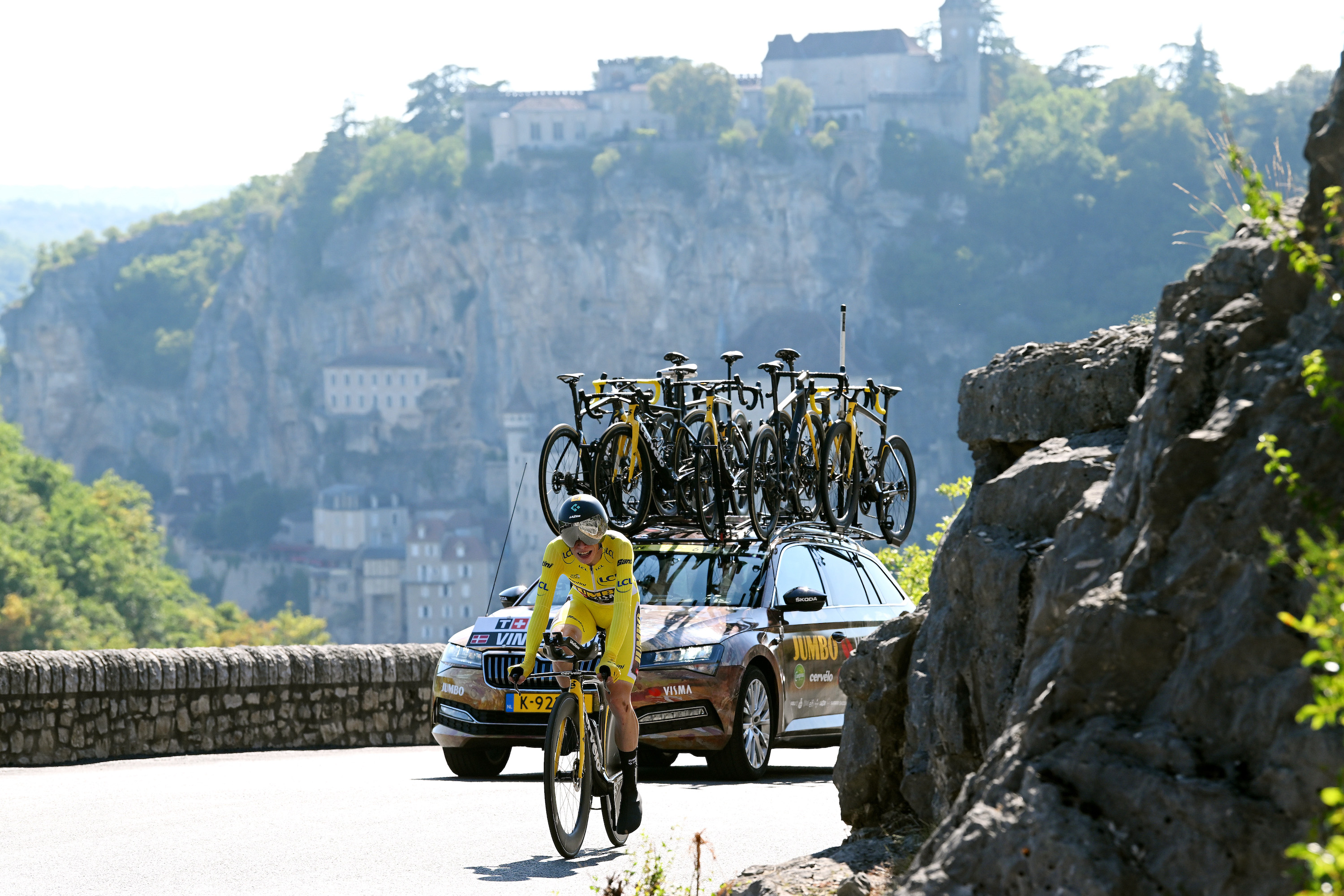UCI bans team cars from following time trial riders too closely
Team cars must now follow riders at a distance of 15 metres rather than 10


The UCI has ratified a new rule for time trials which means that cars will now have to follow riders at 15 metres rather than 10, as was the case before.
The change, as reported by Het Nieuwsblad on Tuesday, comes after a series of high profile riders were seen closely followed by team cars stacked with bikes during time trials in the 2022 season.
The cars had more bikes on it than would ever be necessary during an individual time trial, such as in the photo above from stage 20 of this year's Tour de France, where Jonas Vingegaard is being shadowed by a Jumbo-Visma team car with six bikes on it. The fact that most of them were road bikes show how superfluous they are.
The tactic is supposed to give an aero advantage to the rider in front of the car, it was also seen employed by Filippo Ganna of Ineos Grenadiers throughout the season, especially at Tirreno-Adriatico, where Quick-Step Alpha Vinyl's Remco Evenepoel was similarly assisted.
As a result, the UCI has ruled that cars must now follow riders at 15 metres rather than 10 as before, although it is not known how commissaires will measure this in race.
Earlier this year, Cyclingnews spoke to an aero expert, Richard Kelso, an Adjunct Associate Professor at the University of Adelaide, who explained that the larger area of a team car stacked with bikes pushes more air in front of it, reducing the speed of the airflow around the rider. This, in turn, reduces the drag and allows for a performance boost.
"It is only small but it's enough [to make a difference]," Kelson said.
The latest race content, interviews, features, reviews and expert buying guides, direct to your inbox!
The new distance of 15 metres would effectively stop this advantage from happening.
A study conducted by Bert Blocken and the Eindhoven University of Technology, as reported by Cycling Tips in October, showed that gains from close following cars could be significant, with an aero advantage of 3.7%, 1.4%, and 0.2% for cars following at 3, 5 and 10 m. Over a 50 km time trial, the study says these three scenarios could save the rider as much as 62.4 s, 24.1 s and 3.9 s against a scenario with no car.
The UCI's new rules also introduced new regulations for time trial bike fits, with the required distance between the saddle tip and end of bar extensions, drop to the arm pads and saddle setback all adjusted.
It's a change that Cycling Weekly reported on in October and could help tall riders looking to break Filippo Ganna's Hour Record.
At the UCI Congress in Monaco, plans for pinless bib numbers were also discussed.

Adam is Cycling Weekly’s news editor – his greatest love is road racing but as long as he is cycling, he's happy. Before joining CW in 2021 he spent two years writing for Procycling. He's usually out and about on the roads of Bristol and its surrounds.
Before cycling took over his professional life, he covered ecclesiastical matters at the world’s largest Anglican newspaper and politics at Business Insider. Don't ask how that is related to riding bikes.